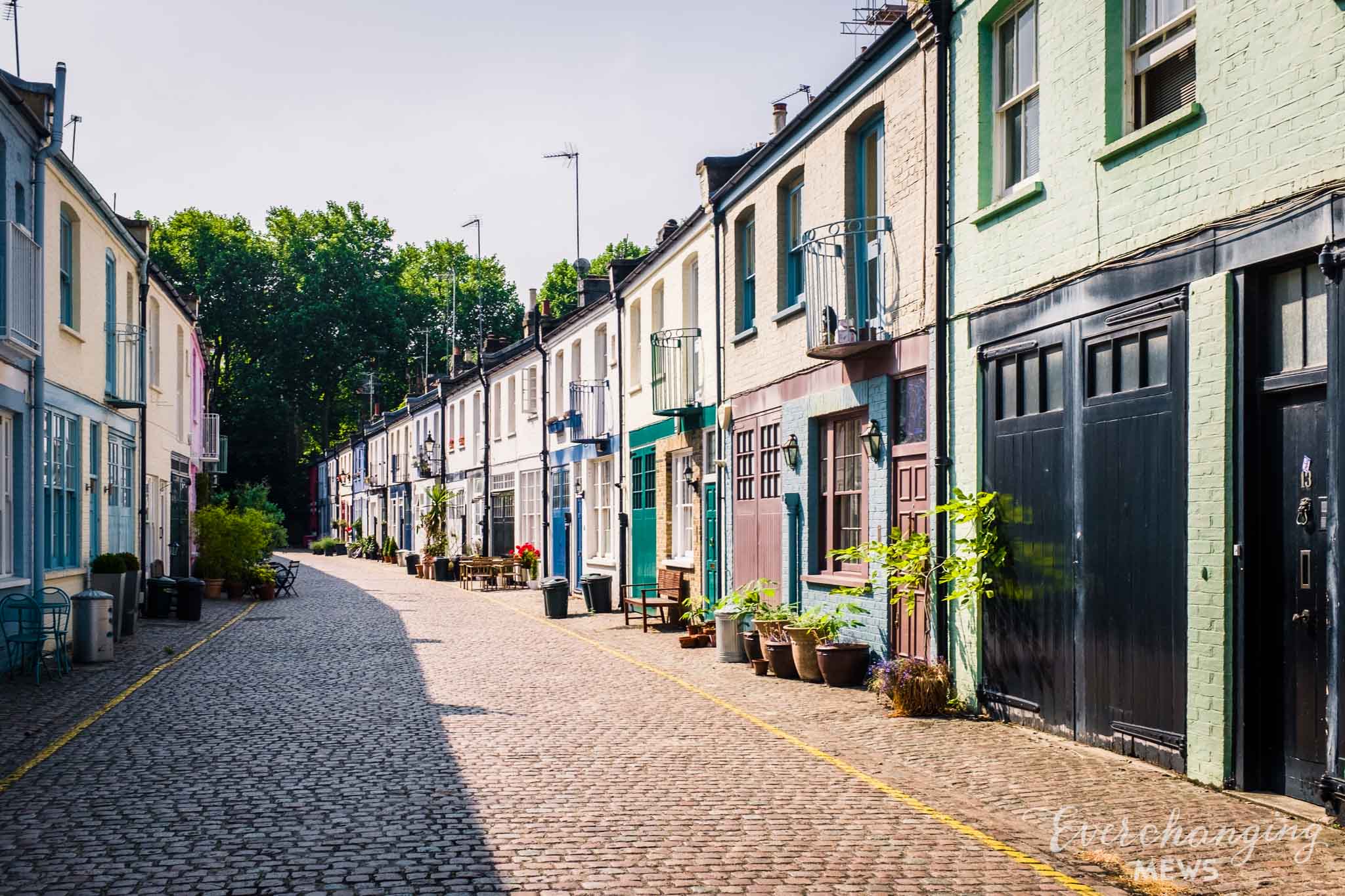Mews is a term that can be used as both singular and plural. It can apply to one Mews property and also to a collection of Mews properties. For clarification we will use the term Mews in the collective sense throughout this article (and also on the Everchangingmews website) and, when referring to a Mews in the singular, will describe it as a Mews property. Whilst this may not be grammatically necessary it does help to avoid confusion.
A Mews property – an end of terraced Mews is shown.

Mews properties – a collection of two and three storey properties are shown.
A Mews property would probably originally have consisted of a coach house with stalls for the horses and, possibly, a loose box or yard for the horses. There would be accommodation for the grooms or stable hands on the upper floor as well as room for the storage of hay and grain. Mews properties were very similar and most surrounded a close, cul de sac or plot of land in a coherent and complementary manner.
The term ‘Mews’ relates to the historical practice of keeping hawks mewed in Charing Cross during the time of Henry VIII.
The next historical mention of Mews relates to Inigo Jones eighty or so years before they emerged across central London as part of the Georgian town planning process. It is claimed that he was the true originator of the Mews when the Earl of Bedford under the guidance of his surveyor Inigo Jones constructed a square with a terrace of houses around Covent Garden. This is considered the first formal square of terraced houses in London and around this were the first Mews. Unfortunately they are no longer in existence.
The more common usage of the term relates to their equine heritage, which evolved since. The Mews properties are now recognised developed from the Georgian Town planning requirement for horses, carriages and the like to be located away from the main houses then being constructed in squares, main thoroughfares and crescents.
This project therefore defines a Mews in two ways:
A) An authentic Mews
ii) Redeveloped
All the Mews included in our study are category A) – An Authentic Mews and all include at least one recognisable example of such a property.
Clearly such a definition could be contentious as it is subjective, but there needs to be a starting point and this is ours:

Authentic Mews
A lane, alley, court, narrow passage, cul de sac or back street originally built behind houses in the 17th, 18th and 19th Centuries to provide access for stables or coach house accommodation (often with associated living accommodation) that now contains original and modernised mainly residential dwellings, some with commercial premises. In an authentic Mews at least one of the properties still has recognizable features from the original Mews but others may have been re-developed and no longer do so.

Authentic Mews Property
A property in a Mews – a lane, alley, court, narrow passage, cul de sac or back street originally built behind houses in the 17th, 18th and 19th Centuries to provide access for stables or coach house accommodation (often with associated living accommodation) – that is now most likely to be a modernised residential dwelling, possibly with commercial premises. An Authentic Mews property will still retain the approximate appearance, form and footprint of the original Mews but it may have been re-developed to a degree and no longer retains all original Mews features
It is interesting, perhaps, to note that using such a definition has resulted in a number of Mews being reclassified after a Mews Census. In 2003 we recorded 451 Original/ Surviving Mews (in addition to 180 Redeveloped Mews and over 50 Mews-Style properties) whereas in 2015 we did additional research and recategorised some Mews after they had been redeveloped; recording 630 Mews (391 Original/ Surviving and 239 Redeveloped).
